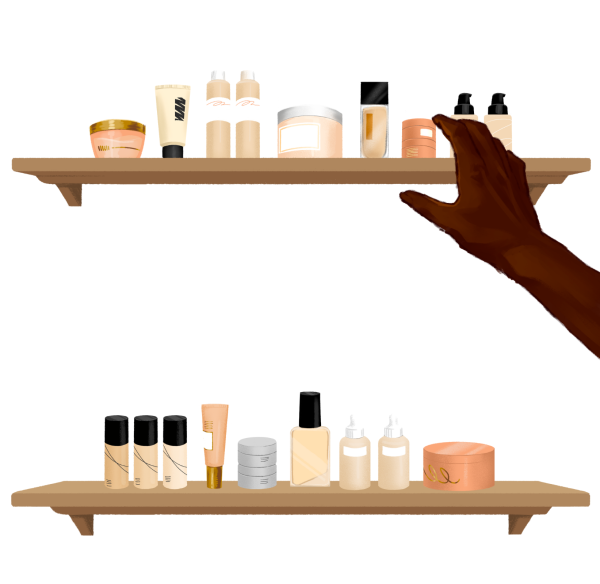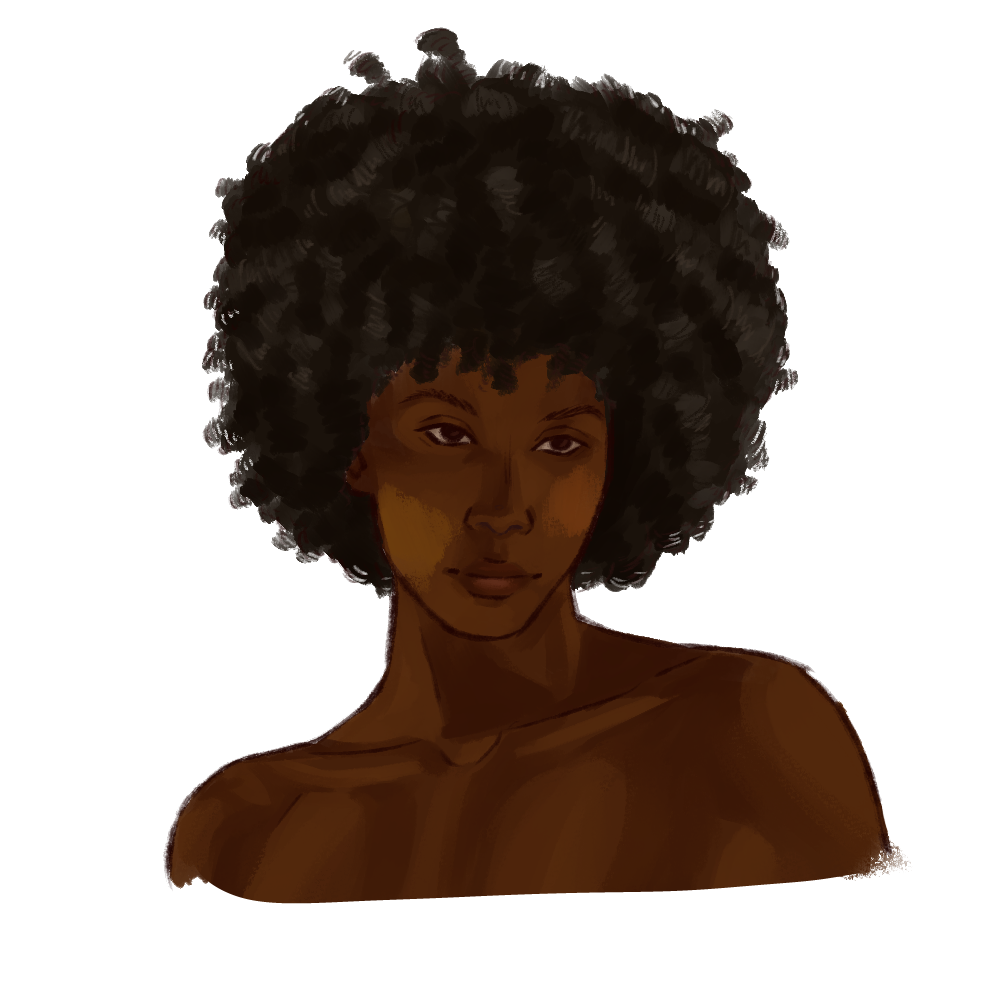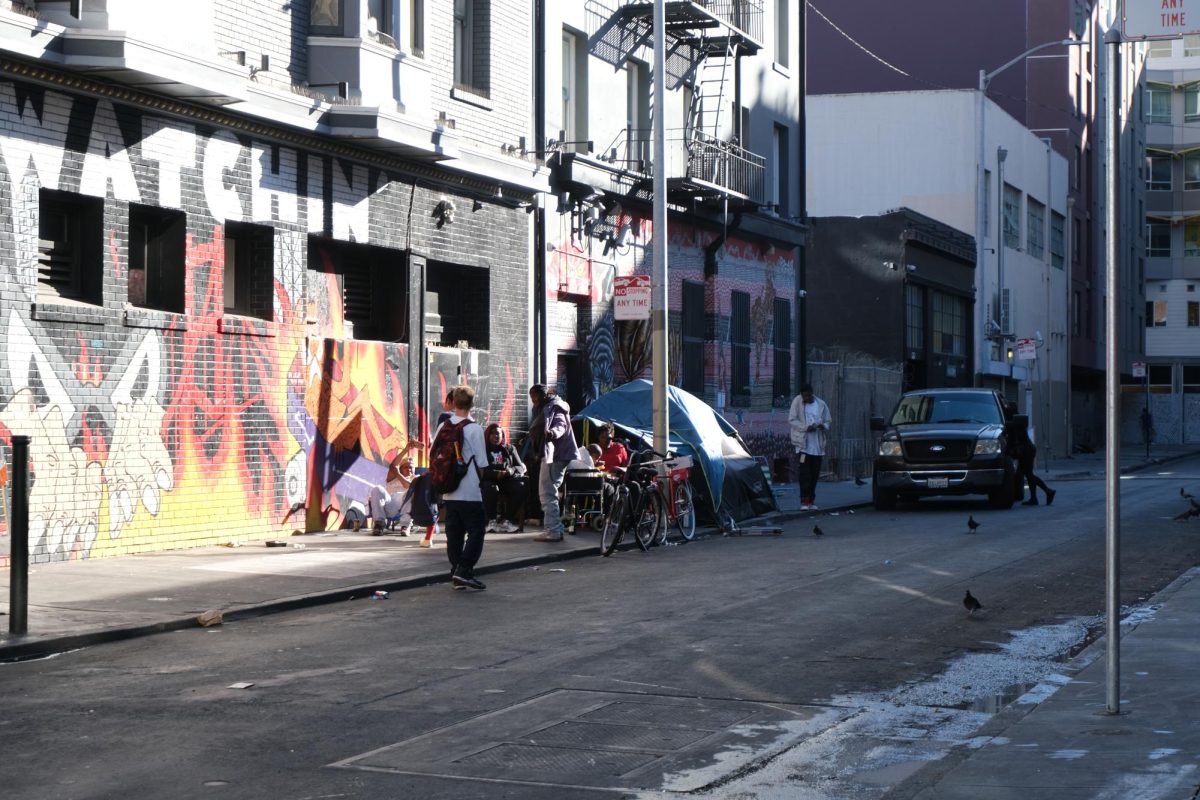When senior Mahadev Tapaskar attended a summer camp with other Indian kids, he didn’t expect to be faced with insults about his skin color.
“The other kids saw how dark I was and would belittle me,” he said. “I even got called a monkey. Being so dark-skinned made me feel like an outlier. Because of that, I just kept to myself and didn’t really hang out with any of the other kids for the rest of the camp.”
Instances like these highlight a form of prejudice closely tied to racism: colorism. Merriam-Webster defines colorism as “prejudice or discrimination especially within a racial or ethnic group favoring people with lighter skin over those with darker skin.” While racism involves discrimination against people based on their racial group, colorism can occur within a single ethnic group.
From the “brown paper bag test” denying dark-skinned Black people entrance into establishments to the development of skin bleaching, colorism has strong historical roots. Its ramifications extend into the present day, perpetuating discrimination and inequality based on skin tone in communities around the world.
Historical background
Over centuries of enslavement or colonial rule, lighter-skinned individuals were often elevated and granted privileges compared to their darker-skinned counterparts, reinforcing the notion that fair skin equates to beauty and superiority.
In the Black communities in the U.S., the origins of colorism date back to slavery, when enslaved people with fairer complexions — sometimes children of the enslaving man and an enslaved woman — were assigned to work in the house, while enslaved people with darker complexions worked in the fields. Those working in the house were more likely to receive an education, nutritious food and less physically harsh working conditions — though they were often sexually assaulted or raped by enslavers.
Colorism persisted post-emancipation, manifesting in the workplace and social hierarchies. Fairer-skinned Black individuals were more likely to secure better jobs and ascend the socioeconomic ladder, perpetuating the notion that lighter skin meant higher status. The infamous “brown paper bag test,” comparing one’s skin tone to the color of a paper bag, emerged as a discriminatory practice used to determine eligibility for membership in elite social circles in the Black community.
In other nations of the Americas, Africa and Asia, colonial powers’ imposition of Eurocentric beauty standards reinforced hierarchies based on skin color, with lighter-skinned individuals often afforded preferential treatment. Over time, colonized peoples internalized these colorist standards, holding onto them even after imperial powers withdrew.
Now, individuals in these communities compete for opportunities and resources based on their perceived “proximity to whiteness.” In a 2002 American Sociological Association paper, Pennsylvania State University sociology and demographics researcher Mark E. Hill explains how “whiteness became identified with all that is civilized, virtuous and beautiful” due to European colonization, bringing those with fairer skin “closer to the opportunities that were only afforded to white people.”
Lighter-skinned individuals may therefore benefit from systemic advantages, further widening the economic gap. In a 2021 study led by the Pew Research Center, 62% of Hispanic adults said that having a darker complexion negatively impacted their chances of getting ahead in the U.S. Additionally, Vanderbilt University economist Joni Hersch led a 2008 study that found that darker-skinned immigrants faced a wage gap of up to 25% compared to their lighter-skinned counterparts. Hersch found that “on average, being one shade lighter has about the same effect as having an additional year of education.”
Not all colorist ideals stem from colonization, however. In some uncolonized communities, laborers got more tan from working in the sun, while upper-class citizens stayed indoors and maintained a fairer complexion. Lighter- skinned people were thus the ones who had a higher socioeconomic status.
Colonialism’s legacy and socioeconomic assumptions contribute to colorism in countries such as India, which senior Aarushi Kumar has noticed during trips there.
“One of my cousins living in India is a lot paler than me,” she said. “There’s this running joke where people say that they would’ve assumed my cousin was the one from America if I never said anything. Since Americans are assumed to have more money, then that means they must be paler.”
Racial passing
Racial passing occurs when an individual of one racial group is accepted or perceived as a member of another racial group. Non-white individuals who are “white-passing” are perceived as or able to pass as white due to their physical appearance. Because of racist and colorist ideals, this perception can afford them certain advantages in society, including access to better opportunities and less discrimination.
Sophomore Airealana Williams, whose mom’s side is Italian and Mexican and dad’s side is Black and Asian, has navigated these skin color biases. “
I feel like there’s a stigma about specifically African Americans that I’ve noticed,” she said. “When I’m with my dad, I noticed we do get looked at differently than when I go out with my mom because my mom has a lighter complexion.”
In the Latino community, white-passing individuals navigate the world with less scrutiny and experience fewer barriers than individuals with darker skin tones. According to “Passing vs Non-Passing: Latina/o/x Experiences and Understandings of Being Presumed White,” a research paper by Francisco Rodriguez at California State University, San Bernardino, Latinos do not associate themselves with a specific race, causing them to be classified into groups and associated with stereotypes that do not accurately represent the diverse individuals in the community.
Sophomore Megumi Estrada Nakamatsu, who identifies as Peruvian Japanese, has observed the different behaviors toward white-passing individuals in her community.
“I know that some people like to say to them that they’re very privileged to be able to look ‘passing,’ but I also know that they also have their hardships as well,” she said.
Processes such as skin-bleaching grew in prevalence during the 19th and 20th centuries in many nations, and many remain in use today. A study led by Allied Market Research showed that the global market for skin lightening was valued at $7.05 billion in 2021.
Representation & belonging
As an Indian person with a darker-than-average complexion, Tapaskar hasn’t always been able to find people who looked like him on the screen. Even in the Indian film industry, movies are filled with fair-skinned actors.
“There are a lot of light-skinned actors in Bollywood, and it just isn’t proportionate to the billions of people in India,” he said. “And it just gets reinforced because having fair-skinned actors is the easiest way to produce stars and is a way of making money and selling beauty items.”
Preference for lighter-skinned minorities shows up in other major film industries as well. Research done by the Geena Davis Institute on Gender in Media found that 81% of Black leading actresses from 2009-19 have a lighter skin tone. Such lack of representation perpetuates harmful stereotypes and reinforces societal ideals of beauty, hurting individuals with darker complexions.
“In Hollywood movies, casting directors have access to a very wide range of skin colors when choosing an Indian actor,” Kumar said. “Yet, somehow, they always end up picking the lightest one. I notice the same pattern is there with successful Black, Hispanic and other Asian actors in Hollywood too. And the few darker-skinned actors are almost always cast in roles that exploit their trauma.”
Beyond the screen in real life, sophomore Natalia Martinez Lopez would try to match the beauty standard by using her lighter-skinned mother’s makeup when she was younger.
“In my household, my mom isn’t brownish-tan, and most of my mom’s side aren’t that brownish-tan — I got that from my dad’s side,” she said. “So whenever I would see her foundation, I’d put the foundation on myself because I was like, ‘Oh, I guess that’s the beauty standard.’”
Embracing darker skin
Nevertheless, many in communities with colorist ideals have learned to embrace their darker skin. Kumar notes that changing society’s equivalence of beauty standards with skin tone is the best way to reduce skin tone-based discrimination. Understanding that a dark skin tone does not indicate unattractiveness can improve people’s perception of self-worth.
“Growing up in California, I have learned to embrace being tan, and I’m happy in my skin,” she said. “I try my hardest to share this same belief with my relatives in India because colorism is very closely tied with beauty standards in East and South Asian cultures. But it’s gonna take a lot more work to spread that same message in Western cultures because there are a lot of misconceptions, so colorism is generally very closely tied with racism here.”
Other students have looked to notable figures who share the same deep complexion they have. Lopez has found this reflection helpful.
“One day, I was crying because a girl said to me, ‘Oh, you’re so brown, like the dirt,’ and I was telling my dad in Spanish, ‘Oh, I wish I was white,’” she said. “He (said,) ‘Don’t say that, your skin color is pretty — it’s just like (Our Lady of Guadalupe’s).’ I really liked her story and idolized her, so I realized I shouldn’t feel bad because I’m the color of her and she’s pretty, so I should feel proud of myself.”



























